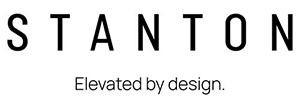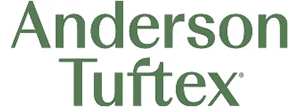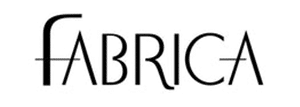Engineered Hardwood vs Traditional Hardwood

When choosing between engineered hardwood and traditional hardwood flooring, it is important to consider factors such as composition, construction, moisture resistance, lifespan, maintenance requirements, and installation limitations. Both options have their advantages and disadvantages, so it is important to weigh them carefully and choose the option that best suits your needs and preferences.
Difference Between Engineered Hardwood and Traditional Hardwood Flooring?
Engineered hardwood and traditional hardwood flooring are distinct in their construction, characteristics, and applications. Let’s explore these differences in greater detail:
- Construction:
- Engineered Hardwood: Engineered hardwood is a composite material made up of multiple layers of wood veneer, often including a top layer of genuine hardwood, bonded together with high-strength adhesives. These layers are stacked in a cross-grain configuration, enhancing dimensional stability.
- Traditional Hardwood: Traditional hardwood, on the other hand, is crafted from solid planks cut from a single piece of timber, maintaining the same wood species throughout.
- Purpose and Benefits:
- Engineered Hardwood: Engineered hardwood is engineered to provide increased stability and durability. Its layered structure is designed to minimize the natural expansion and contraction of wood due to changes in temperature and humidity. This structural advantage makes engineered hardwood less susceptible to warping, cupping, and other deformities, making it an ideal choice for areas with fluctuating moisture levels, such as basements, bathrooms, and regions with varying climate conditions.
- Traditional Hardwood: Traditional hardwood boasts the natural beauty and character of solid wood. While it adds a timeless and warm aesthetic to spaces, it may be more sensitive to environmental changes and moisture, making it less suitable for certain locations.
- Installation Methods:
- Engineered Hardwood: Engineered hardwood offers more flexibility in terms of installation methods. It can be installed using various techniques, including floating (where planks are not affixed to the subfloor but locked together), glue-down (using adhesive to secure planks to the subfloor), or nail-down (fastening the planks with nails or staples).
- Traditional Hardwood: Traditional hardwood typically involves a more labor-intensive installation process, where planks are usually nailed or stapled directly onto a wooden subfloor. It requires a solid, flat subfloor and is often a more involved installation process.
- Water Resistance:
- Engineered Hardwood: Engineered hardwood exhibits superior water resistance. Its layered construction and the use of moisture-resistant adhesives enhance its ability to withstand moisture. While it’s not impervious to water, it’s a more water-resistant option compared to traditional hardwood.
- Traditional Hardwood: Traditional hardwood is more susceptible to water damage and should not be installed in areas prone to spills or high humidity levels without appropriate precautions, such as sealing, finish, or regular maintenance.
In summary, engineered hardwood and traditional hardwood have their unique attributes and applications. Engineered hardwood excels in environments where moisture and temperature variations are common, offering versatility in installation methods. Traditional hardwood, with its timeless beauty, is best suited for spaces where environmental conditions are stable and well-maintained. The choice between the two depends on your specific needs and preferences.
Is Engineered Hardwood Real Wood, or Is It a Synthetic Material?
Engineered hardwood flooring is indeed made of real wood, and it offers a balance between the beauty of hardwood and enhanced durability. Let’s clarify the composition of engineered hardwood:
Composition of Engineered Hardwood:
- Top Layer (Wear Layer): The top layer of engineered hardwood, often referred to as the wear layer, is crafted from genuine hardwood. This layer provides the same aesthetic appeal, look, and feel as traditional solid wood flooring. The thickness of the wear layer may vary depending on the manufacturer’s specifications and the desired durability.
- Core Layers: Beneath the top layer, engineered hardwood typically features core layers that are constructed using materials like high-density fiberboard (HDF) or plywood. These core layers serve a structural purpose. They provide stability and strength to the flooring, reducing the likelihood of warping or shrinking compared to solid wood flooring.
It’s crucial to understand that while the surface layer of engineered hardwood is real wood, the core layers are typically composed of materials like HDF or plywood. These core layers are engineered to enhance the flooring’s stability and resistance to environmental factors such as changes in humidity and temperature. The combination of real wood on the surface and engineered core layers creates a flooring option that delivers the beauty of wood with improved durability.
How is Engineered Hardwood Flooring Constructed?
The construction of this flooring type involves several distinct layers, each with a designated purpose. The core layer, often composed of plywood or high-density fiberboard (HDF), imparts the plank with structural stability and durability. Positioned atop the core layer, the actual hardwood veneer, typically 1/16 to 1/8 inch thick, bestows engineered hardwood with its characteristic appearance and texture.
To create the final product, these layers are firmly united using high pressure and heat. The adhesive employed in this process ensures the layers remain securely attached, thwarting issues like warping or separation over time. Additional treatments may also be applied to bolster the strength and moisture resistance of the planks.
Engineered hardwood flooring construction provides distinct advantages when compared to traditional solid hardwood flooring. It exhibits greater versatility, allowing installation in areas susceptible to moisture fluctuations or even on concrete subfloors due to its enhanced stability. Furthermore, it offers a more budget-friendly option while preserving the aesthetic allure commonly associated with traditional solid hardwood floors.
Which Type of Hardwood is More Resistant to Moisture and Humidity?
- Oak’s Moisture Resistance: Oak, a type of hardwood, boasts remarkable resistance to moisture and humidity. This quality has made it a favored choice for flooring in areas prone to high moisture levels, such as bathrooms and kitchens.
- Engineered Hardwood Construction: Engineered hardwood is fabricated using multiple layers of wood veneer that are securely bonded under pressure. This construction method imparts superior stability and moisture resistance compared to traditional hardwood.
- Traditional Hardwood Flooring: Traditional hardwood flooring consists of solid wood planks milled from a single piece of timber. While it offers undeniable durability and natural beauty, traditional hardwood tends to expand and contract with fluctuations in temperature and humidity. It can also be more vulnerable to issues like warping or cupping when exposed to excessive moisture.
- Engineered Hardwood’s Moisture Resistance: In contrast, engineered hardwood is meticulously designed to counteract these issues. The layers of wood veneer used in its construction are positioned perpendicular to each other, creating a robust and stable core that minimizes the effects of moisture-related expansion and contraction.
Both engineered and traditional hardwood can infuse warmth and elegance into any space. However, when the focus is on moisture and humidity resistance, oak, especially in the form of engineered hardwood, stands out as the superior choice. For areas where concerns about excessive moisture or humidity levels exist, oak-engineered hardwood is an ideal option, thanks to its remarkable resistance properties.
Do Engineered Hardwood and Traditional Hardwood Have Similar Lifespans?
When comparing the lifespans of engineered and traditional hardwood, it’s crucial to consider various factors that influence their longevity. Both types of hardwood have their unique characteristics that impact how they age and stand up to wear and tear.
Factors Influencing Lifespan:
- Maintenance:
- Engineered Hardwood: Engineered hardwood typically requires minimal maintenance. It’s less prone to surface damage like scratches and dents due to its wear-resistant top layer. Routine cleaning and occasional resealing are usually sufficient to keep it in good condition.
- Traditional Hardwood: Traditional hardwood may demand more frequent maintenance. It’s more susceptible to surface wear and may require periodic refinishing to restore its appearance and protect against deep scratches and gouges.
- Wear Resistance:
- Engineered Hardwood: Engineered hardwood often boasts a high degree of wear resistance, primarily thanks to its robust top layer of genuine hardwood. This layer can endure heavy foot traffic and everyday wear without losing its aesthetic appeal.
- Traditional Hardwood: Traditional hardwood offers moderate wear resistance. While it maintains its natural beauty, it can be more susceptible to surface damage, especially in high-traffic areas.
- Exposure to Moisture:
- Engineered Hardwood: Engineered hardwood excels in areas with moisture exposure. Its layered construction minimizes the effects of moisture-related expansion and contraction, making it resistant to warping, cupping, and other damage.
- Traditional Hardwood: Traditional hardwood is more sensitive to moisture fluctuations and is prone to damage, including warping and cupping when exposed to excessive moisture. It’s less suitable for spaces with high humidity levels.
In summary, engineered hardwood generally offers a longer lifespan due to its enhanced wear resistance and moisture resistance. Its lower maintenance requirements also contribute to its durability. Traditional hardwood, while enduring and timeless, may require more upkeep and is best suited for environments with stable moisture levels and lower foot traffic. Ultimately, the choice between the two should align with your specific needs, the intended use of the flooring, and your willingness to invest in maintenance.
Which Type of Hardwood is Easier to Maintain and Clean?
Maintaining and cleaning hardwood flooring is essential for its longevity and aesthetics. While both engineered hardwood and traditional hardwood require regular care, there are distinctive differences between the two in terms of maintenance and cleaning, making engineered hardwood a more manageable option.
- Maintenance:
- Engineered Hardwood: Engineered hardwood offers several maintenance advantages. It is more resistant to temperature and humidity fluctuations, reducing the likelihood of warping or expansion. Engineered hardwood typically features a protective top layer, enhancing its durability and minimizing susceptibility to scratches or dents.
- Traditional Hardwood: Traditional hardwood is more sensitive to changes in moisture levels. It demands regular monitoring and, in dry environments, humidification. Over time, traditional hardwood may necessitate refinishing to restore its original beauty due to wear and tear.
- Cleaning:
- Engineered Hardwood: Cleaning engineered hardwood is relatively straightforward. A damp cloth or mop, coupled with a mild cleaner specially formulated for this type of flooring, is typically sufficient. It is crucial to avoid excessive moisture, as it can damage the wood layers beneath the protective finish.
- Traditional Hardwood: Cleaning traditional hardwood involves regular sweeping or vacuuming to remove dirt and debris. Mopping with a specialized wood floor cleaner is recommended for more thorough cleaning. Promptly addressing spills is essential to prevent standing water from penetrating the wood, which can lead to damage.
In summary, engineered hardwood is the more user-friendly option when it comes to maintenance and cleaning. Its resistance to environmental fluctuations and durable top layer makes it easier to care for and less susceptible to damage. Traditional hardwood, while timeless and elegant, requires more meticulous attention, especially regarding humidity levels and refinishing over time. The choice between the two should align with your specific lifestyle, maintenance preferences, and the environmental conditions of the space where the flooring will be installed.
Are There Limitations on Where You Can Install Engineered or Traditional Hardwood?
Installing hardwood flooring involves critical considerations regarding the type of hardwood chosen and where it can be effectively used. Both engineered hardwood and traditional hardwood have specific limitations and advantages that should guide your selection based on the intended installation location.
Engineered Hardwood:
- Construction for Versatility: Engineered hardwood’s composition with multiple layers of wood veneers provides enhanced stability and moisture resistance. This makes it a suitable choice for areas with varying humidity levels, including basements and bathrooms.
- Compatibility with Concrete Subfloors: Engineered hardwood is flexible and can be installed over concrete subfloors. It accommodates different installation methods, such as glue-down or floating, adding to its versatility.
- Advantages in High-Moisture Areas: Engineered hardwood’s moisture resistance and stability make it a smart choice for spaces where traditional hardwood may not perform well.
Traditional Hardwood:
- Solid Wood Throughout Traditional hardwood consists of solid wood throughout its thickness. While this imparts its timeless beauty and natural appeal, it comes with some limitations.
- Not Suitable for High Moisture Areas: Traditional hardwood is not recommended for areas with high moisture content or below-grade installations. It is more prone to warping, cupping, or other damage when exposed to excessive moisture.
- Subfloor Requirements: Installing traditional hardwood typically requires a plywood subfloor or wooden joists to provide the proper foundation. This can be a limitation in some installation scenarios.
In conclusion, your choice between engineered and traditional hardwood should be influenced by the specific environment where the flooring will be installed. Engineered hardwood is more versatile, offering better moisture resistance and compatibility with various subfloor types, making it suitable for a broader range of spaces. Traditional hardwood, while prized for its natural beauty, may have restrictions in terms of installation locations, particularly those with high humidity or moisture levels. Therefore, understanding the conditions of your space is essential in determining which type of hardwood will be most suitable.
Can Engineered and Traditional Hardwood be Used in Commercial Spaces?
Both engineered and traditional hardwood can find their place in commercial settings, but the choice should be informed by the particular demands and limitations of the space.
Engineered Hardwood for Commercial Spaces:
- Versatility: Engineered hardwood’s layered construction enhances its stability and durability. This makes it a versatile choice for commercial environments where foot traffic and wear are significant concerns.
- Moisture Resistance: Its resistance to moisture and temperature fluctuations is beneficial in areas with varying environmental conditions.
- Subfloor Flexibility: Engineered hardwood can adapt to different subfloor types, allowing for a wider range of installation options.
Traditional Hardwood for Commercial Spaces:
- Aesthetic Appeal: Traditional hardwood offers timeless beauty and natural warmth, which can enhance the overall ambiance of commercial spaces. It creates a classic and inviting atmosphere.
- Care and Maintenance: Traditional hardwood can be used in commercial settings with diligent care and maintenance. This includes regular cleaning, refinishing, and careful monitoring of moisture levels.
When considering either type of hardwood for a commercial space, it’s essential to evaluate factors like:
- Foot Traffic: Consider the volume and type of foot traffic the space will experience. Engineered hardwood may be more resilient to heavy traffic.
- Moisture Levels: Assess the space’s moisture levels and potential exposure to humidity. Engineered hardwood may be more suitable for areas with moisture fluctuations.
- Subfloor Conditions: Understand the condition and type of the subfloor, as this can affect the installation process.
Consulting with flooring professionals like In Home Flooring is important. They can guide you in selecting the most appropriate hardwood type based on budget constraints, style preferences, and expected wear and tear. A well-informed decision ensures that the selected hardwood aligns with the specific requirements of the commercial space, improving both functionality and aesthetics.
Installation Methods
The installation methods for engineered and traditional hardwood play a significant role in determining their suitability for various spaces. Here, we delve deeper into the specifics of these installation methods:
Engineered Hardwood:
- Glue-Down Installation:
- In this method, engineered hardwood planks are adhered to the subfloor using a specialized hardwood adhesive.
- It offers a secure and stable installation that minimizes movement and sound.
- Glue-down installation is ideal for concrete subfloors, where nailing or stapling is not feasible.
- It is often chosen for environments with high humidity or moisture levels, as it further enhances the flooring’s resistance to moisture.
- Nail-Down Installation:
- While engineered hardwood is versatile, some variants with a thicker wear layer can be nailed or stapled down to a wooden subfloor.
- This method provides robust fixation, especially in areas with moderate to heavy foot traffic.
- It can offer a traditional hardwood appearance while still taking advantage of engineered hardwood’s stability and moisture resistance.
- Floating Installation:
- Engineered hardwood can also be installed as a floating floor, where the planks are not attached to the subfloor but rather locked together.
- A foam or cork underlayment is typically used beneath the planks to create a cushioned surface.
- Floating installations are known for their ease and speed, making them a popular choice for DIY projects.
- They allow for minor subfloor imperfections to be accommodated, contributing to a smoother overall finish.
Traditional Hardwood:
- Nail-Down or Staple-Down Installation:
- Traditional hardwood planks are commonly secured to the subfloor using nails or staples.
- This method is labor-intensive and requires precision to avoid damaging the wood.
- Nailing or stapling provides a robust and long-lasting installation, characteristic of classic hardwood floors.
- Glue-Down Installation (Less Common):
- In some cases, traditional hardwood can also be glued down to the subfloor, particularly when the subfloor is concrete or where the use of nails is not possible or desired.
- This method is less common in comparison to nail-down installation but offers similar stability and permanence.
- Staple-Down Installation (Alternative to Nailing):
- Some hardwood installers use staples, similar to nails, to secure traditional hardwood to the subfloor.
- Staple-down installation can be faster than nailing and offers good stability.
In summary, engineered hardwood’s versatile installation methods, including glue-down, nail-down, and floating, make it suitable for a wide range of environments and subfloor conditions. Traditional hardwood typically involves nailing or stapling to the subfloor, although glue-down and staple-down methods are also options in specific scenarios. The choice of installation method depends on the type of hardwood, subfloor conditions, and the desired aesthetic and performance outcomes


















